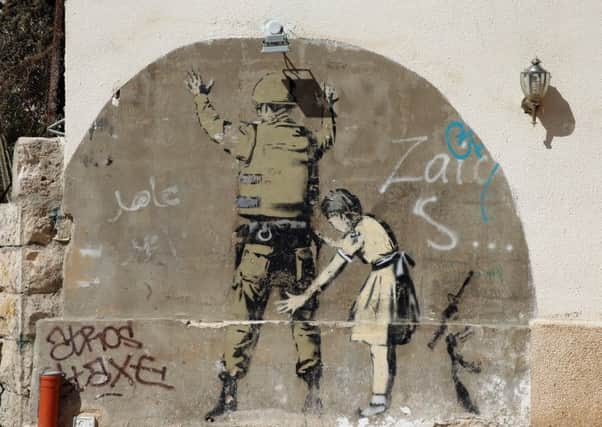Christine Jardine MP: I'm haunted by a scene from a trip to Israel


There is an image which has stayed with me for almost 30 years.
Holidaying in Israel with my husband, I witnessed an encounter which, although largely innocent, somehow for me now encapsulates the region’s problem. It had been a burning ambition of mine to visit this new, modern and yet simultaneously ancient country.
Advertisement
Hide AdAdvertisement
Hide AdI felt, and still feel, a strong connection with its land and history. I’m no longer religious, but at that time I revelled in the biblical sites and references, the unequalled significance of Jerusalem to three of the world’s great religions. And yet I came home feeling moderately uncomfortable.
I have visited Israel again twice since – once four years ago as a guest of the Liberal Democrat Friends of Israel and again in the past three weeks, amid the aftermath of bloody attacks in Gaza, with the Council to Advance Arab British Understanding (Caabu). My firm belief in a two-state solution – Israel and Palestine – has never wavered. But somehow over the course of those visits that feeling of moderate discomfort became first a nagging doubt and now a depressing realisation. As someone who has celebrated the Centenary of the Balfour Declaration as the first steps to the establishment of Israel, I now recognise that its second imperative, protecting the rights of the Palestinians, has been lost.
And at the heart of that realisation is that image. On my first trip, my husband and I were passing through security into the area around the Western Wall when we saw some young adults making fun of an elderly shopkeeper. It’s the sort of thing you see young lads across the world doing. They take off someone’s hat and pass it among themselves, teasing. Annoying but harmeless.
But this was an elderly Palestinian and these were young conscripts of the Israeli Defence Force. It was during the intifada and the undercurrent was unmistakable. The young soldiers were relieving the tension they must have felt daily with some fun. The elderly Palestinian was restrained but his expression betrayed a belief that one day he would have the last word.
We moved on quickly through the security, nervously glancing back, hoping not to get embroiled in whatever this might become. Fast forward 30 years and I am back in Jerusalem at the Western Wall. I have spent three days visiting Palestinian refugee camps, towns, schools, and a hospital.
I have heard of the success of the Palestinian education system which is regarded as the best in the Arab world. I have visited the Israeli Military Courts on the West Bank where Palestinian youths suspected of stone throwing, or worse, are taken for trial.
And I have visited the school in the Aida refugee camp, now 70 years old, where we saw a children’s football pitch with a netting roof to prevent incoming tear gas canisters from burning the plastic turf. That same refugee camp is now facing an even more uncertain future, if that is possible, as the US has said it will cut funding to the United Nations agency set up to administer it. Touring the school you look out of windows and see the security wall, built to protect Israeli citizens from the suicide bombers who blighted, and ended, so many lives in this country. It is so close you walk across the road and can touch it, if you dare, with its massive Banksy-style representation of the conflict, a mural emblazoned with the words: “We can’t live so we are waiting to die.”
I know there is more than one side, one argument, one justification to be proffered in this 70-year-old dispute. On a previous visit, I met representatives of each of the Israeli political parties, the government, the settlers’ organisation and Fatah.
Advertisement
Hide AdAdvertisement
Hide AdOn this visit, I again met representatives of the Palestinian Authority, aid agencies, the communities and a representative of the Israeli Foreign Office who described to me the horror of his four-year-old daughter witnessing a suicide bomb close to her kindergarten.
I have heard their fears, their frustrations and their hopes. I don’t claim to be an expert. But I am confident that I’ve seen a fair cross-section of life in Israel and the West Bank. As I write this, the focus of international attention is on a Bhedouin settlement – Khan Al Ahmar – just outside Jerusalem, which the Israeli supreme court has ruled can be demolished.
The community has been there since the 1950s. They have built their own school and have solar panels, toilets and other facilities provided by the European Union. But the Israeli Government says they have no planning permission.
The United Nations has condemned the Israeli stance. And yet we all cling on to the hope that somehow there will be a solution to this standoff. Hope. It’s the one thing that both sides have in common.
Perhaps the place where that reliance on hope struck me most was in Aida. Above the entrance to the refugee camp is a massive key – a symbol of those brought to this camp 70 years ago by people who had locked their doors and fled here, hoping one day to return. There is also a small shop where a young Palestinian, born and brought up in the camp, makes simple rustic jewellery. He uses the remains of tear gas cannisters. I bought a piece. A simple, basic key on a chain. I can’t help but wonder if that elderly Palestinian I saw 30 years ago, had kept one just like it. A reminder of the home he had lost.
My key will be a reminder that those of us who have a chance to make even the smallest impression on the situation in Israel and the West Bank have a duty to do so.
